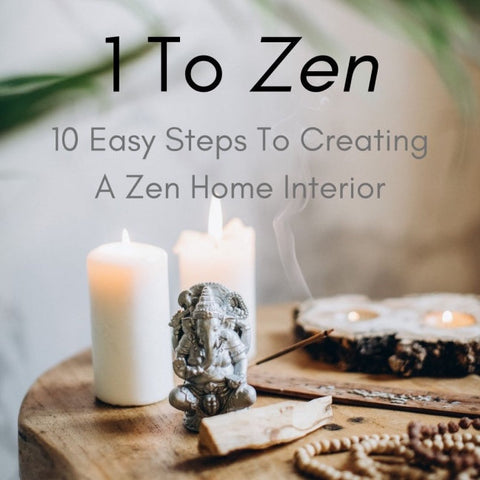
The health benefits of simply having nature close by is not new or groundbreaking news. But, the list of benefits, and the understanding of humanity's true need for nature is growing exponentially.
You probably already know that your natural surroundings have some affect on your mental and physical state. We all feel better after a walk on the beach or through the forest, but there's a lot more happening between the inside and outside worlds than we are aware of.
In fact, while we were delving into the topic of biophilic design - mimicking nature in your home interior - we learned that simply having the view of a garden outside the window can have a measurable impact on your mental and physical health.

Believe it or not, keeping nature close by is much easier than you think - even if where you live happens to be in the midst of rolling on-and-off lockdowns.
So, read on and find out how and why you should change your interior spaces for the better!
Pre-2020, the average person in the US, UK, & EU already spent about 85% of their time indoors, be it at work, at home, commuting, or socialising.
Since the Covid-19 Pandemic, our time indoors has drastically increased to around 95% for the average person.

All of this time spent inside our homes, vehicles and workspaces surrounded by artificial sights, sounds, smells and sensations; a wholly unnatural environment, has an equally unnatural affect on our minds and bodies. But, it wasn't always this way, for humanity, it's been a slow move away from nature.
Now that we're indoors much more and missing out on natural elements, it takes a conscious effort to keep nature in our lives, an ideal way is through your home or work space.

''[Nature] invigorates, rejuvenates, reduces stress, depression, anger and frustration. It improves our mood and physical health, enhances focus and clarity... promotes a sense of belonging, calm and acceptance'' - wise words from Holistic Architect and Interior Designer Anthony Ashworth.
So, in a world with pandemics, urbanisation and a reality where more of us spending more of our time indoors and shut away from the wild, how do we welcome more nature into our lives?

Well, the first answer you may have already guessed: go outside and immerse yourself in nature as much as you can.
The second answer is equally important and a little more complex. If you ask holistic architect and interior designer Anthony Ashworth: you enlist the help of some biophilic design.
What Is Biophilic Design?
In the words of Ashworth, biophilic design is about 'bringing a sense of the natural world into our built environment.'
If you ask Wikipedia, they say it's about 'increasing [the homeowner's] connectivity to the natural environment through the use of direct nature, indirect nature, and space and place conditions.'
Simply put, it's about bringing a little more nature into your interior spaces; whether that be through reflecting nature's textures, patterns, lighting and rhythms, or by physically adding more natural materials and plants to a space.

Biophilic design has its roots in an inter-connective way of thinking; that human wellbeing is derived from (among other things) a balance with nature, and so we need nature in our lives to be able to live a happy and healthy life.
Biophilic design is about so much more than adding plants to your home, it's an ethos where interior design is not just for functionality or aesthetics, but is a tool that you can harness to improve your mental and physical wellbeing through your surroundings.
So, if you want to learn some easy biophilic design tricks to transform your interior spaces, check out the next chapter here. (Next Chapter Coming Soon)

Making more time and space for nature increases the quality and even the length of our lives.
-
Read More Articles In This Blog
Or
See Our Collection of Wooden Kitchenware & Decor.
Header Photo By: Tom Raffield




Comments (0)
There are no comments for this article. Be the first one to leave a message!